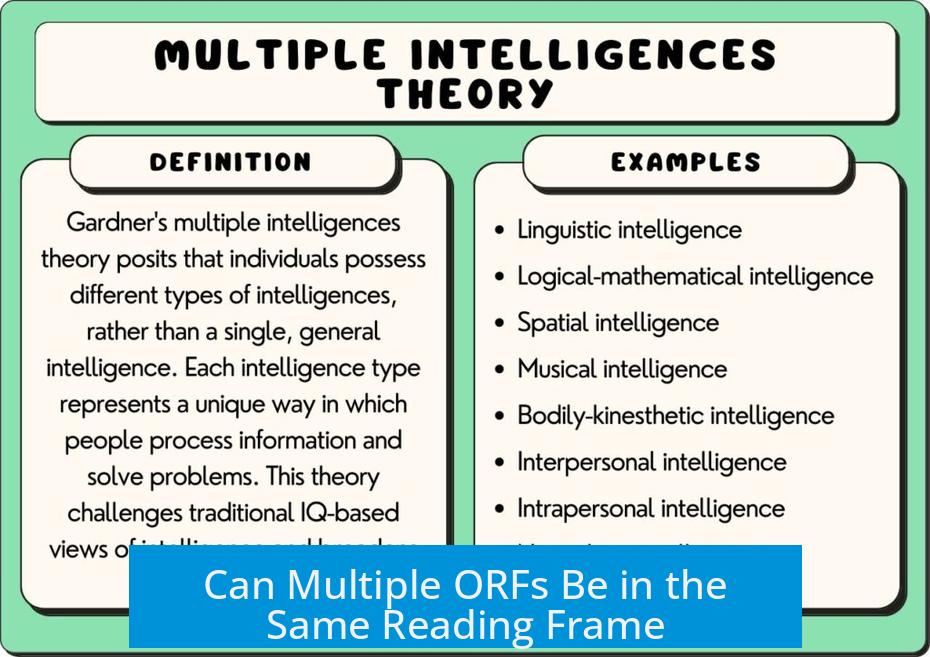Can Multiple ORFs Be in the Same Reading Frame?

Yes, multiple open reading frames (ORFs) can exist in the same reading frame within a single nucleotide sequence. This is due to various biological mechanisms such as internal start codons, non-ATG initiation sites, and variable efficiency in translation termination. Therefore, detecting several ORFs in the same frame by tools like NCBI’s ORFfinder is consistent with molecular biology principles and not an error.
Understanding ORFs and Reading Frames
An ORF is traditionally defined as a sequence beginning with a start codon (often ATG) and ending with a stop codon (TAA, TAG, or TGA) within one reading frame. However, this simple model misses biological nuances.
Internal Start Codons within the Same Frame
- Multiple functional start sites can exist inside a single reading frame.
- Ribosomes may initiate translation at internal ATGs or near-cognate codons, creating shorter or truncated protein products.
- This phenomenon is common, especially in viruses, which often produce multiple proteins from overlapping sequences.
Non-Canonical Start Codons
Not all translation initiation depends strictly on ATG codons. Several alternative codons may also serve as start sites, expanding the possibility of multiple ORFs.
Variability in Stop Codon Usage
Stop codons are generally signals for translation termination, but exceptions occur. Some mechanisms bypass standard stops, allowing translation to continue and potentially creating overlapping ORFs.
Ribosomal Scanning and Upstream ORFs (uORFs)
The ribosome scans the 5′ untranslated region of mRNA looking for favorable start sites. This scanning enables the recognition of multiple ORFs along the length of the RNA, including upstream ORFs that regulate gene expression.
Biological and Regulatory Complexity
Genes can be regulated at the RNA level by allowing multiple ORFs within the same frame or by using frame-shifting mechanisms. Frame shifts alter reading frames, enabling alternative protein functions from overlapping coding sequences.
| Factor | Effect on ORFs in Same Frame |
|---|---|
| Internal start codons | Create multiple ORFs initiating within the frame |
| Non-ATG start codons | Expand potential initiation sites |
| Stop codon exceptions | Permit extended or overlapping ORFs |
| Ribosomal scanning | Identify multiple start sites along mRNA |
| Frame-shifting | Enable alternative proteins from overlapping frames |
Why ORFfinder Shows Multiple ORFs in One Frame
ORF detection algorithms broadly search for all potential ORFs by scanning for start and stop codons. Ignoring nested ORFs, such tools still report multiple ORFs if they start at distinct start codons within the same frame. This approach reflects biological complexities rather than a software mistake.
Key Takeaways
- Multiple ORFs can occur in the same reading frame due to internal and alternative start codons.
- Stop codons can sometimes be bypassed, allowing overlapping ORFs.
- Ribosomal scanning promotes translation initiation at multiple sites along mRNA.
- ORFfinders report multiple ORFs per frame to capture biologically relevant possibilities.
- Biological regulation of gene expression involves complex use of multiple ORFs, including truncated and upstream versions.





Leave a Comment